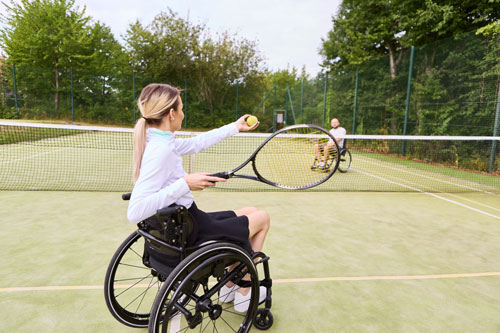Now that Memorial Day—the unofficial start of summer—is in the rearview window, we can look forward to long sunny days, brightly colored flowers, lush greenery and a wide range of recreational opportunities. But finding accessible activities and venues can be challenging. In today’s post, we’ve done our best to remove some of the guesswork.
1. Climb a mountain (or just take a nature walk)
Wheelchair accessible parks and recreation sites were once few and far between. But today, many trails and nature reserves have upped their games to accommodate people with mobility challenges and other disabilities. To discover what’s available in your area, visit Traillink.com and The Nature Conservancy.
2. Take up an adaptive sport
Summer sports provide exercise, skill building, comradery and, most of all, fun! These days, it’s relatively easy to find an adaptive version of pretty much any competitive game or solo recreational activity you can imagine. Whether it’s swimming, surfing, boating, baseball, tennis or fishing, you can probably find it on moveunitedsport.org.
3. Visit an accessible or inclusive playground
Every year, more and more communities create accessible and inclusive playgrounds and the benefits to disabled and non-disabled children are abundant. For a growing directory of these playgrounds, visit accessibleplayground.net.
4. Take a break!
Once upon the time, taking a summer trip with a family member who uses a wheelchair might have seemed extremely daunting. But in recent years, the disabled travel industry has grown by leaps and bounds. Nowadays, wheelchair users have a variety of options, and many resorts, historic sites, and recreational facilities have increased their accessibility offerings. To find information about accessible lodging, transportation options, restaurants or recreational facilities, see websites such as spintheglobe.net, easyaccesstravel.com and wheeltheworld.com.
5. Enjoy live entertainment
Whether you favor Shakespeare in the Park, JazzFest, or Coachella, attending an outdoor entertainment event is one of summer’s greatest pleasures. But before you head out, make sure that the venue will work for you. In New York City, visit nyctourism.com. Elsewhere, check out ATCmobility.com for a list of accessible outdoor entertainment venues.
6. Smell the flowers
Few activities provide more sensory stimulation or more pleasure than a trip to a botanical garden. According to Wheeltheworld.com, you can find accessible gardens across the country. For example, “Brooklyn Botanical Garden offers accessible paths that are relatively smooth with little slopes. Portland is known for its tranquil Japanese Garden with ADA-accessible walkways. Tucson offers a 5.5 acre gardens with smooth flooring.”













